Project managers who aren’t based in the United Kingdom might not be intimate with the PRINCE2 methodology of managing a project, which is the UK government standard. Although foreign to some outside of the United Kingdom, there’s still much to be gained from the PRINCE2 project management method, even if it isn’t adopted in its entirety.
What Is PRINCE2?
PRINCE2 is a project management methodology that is mostly used in the UK, Australia and European countries. “PRINCE2” stands for Projects IN Controlled Environments, because this method focuses on managing resources and risks by dividing projects into smaller stages, defining clear roles & responsibilities and using seven processes to manage the project life cycle.
By organizing the project into logical steps, PRINCE2 demands a project management framework that has an organized and controlled project plan before starting, one that maintains its organization through the project life cycle.
We’ll go over the main components of the PRINCE2 project management methodology, which are:
- PRINCE2 Principles
- PRINCE2 Aspects
- PRINCE2 Themes
- PRINCE2 Roles and Responsibilities
- PRINCE2 Processes
- PRINCE2 Management Products
The control is achieved by seven PRINCE2 processes that compose a project, from start to finish. That involves planning and scheduling. ProjectManager is award-winning project management software with online Gantt charts that are a perfect fit for the PRINCE2 methodology. Our powerful Gantt charts break project phases into milestones and link all four types of task dependencies to manage your schedule. Once you have a plan in place, set the baseline to capture your progress. Get started today for free.
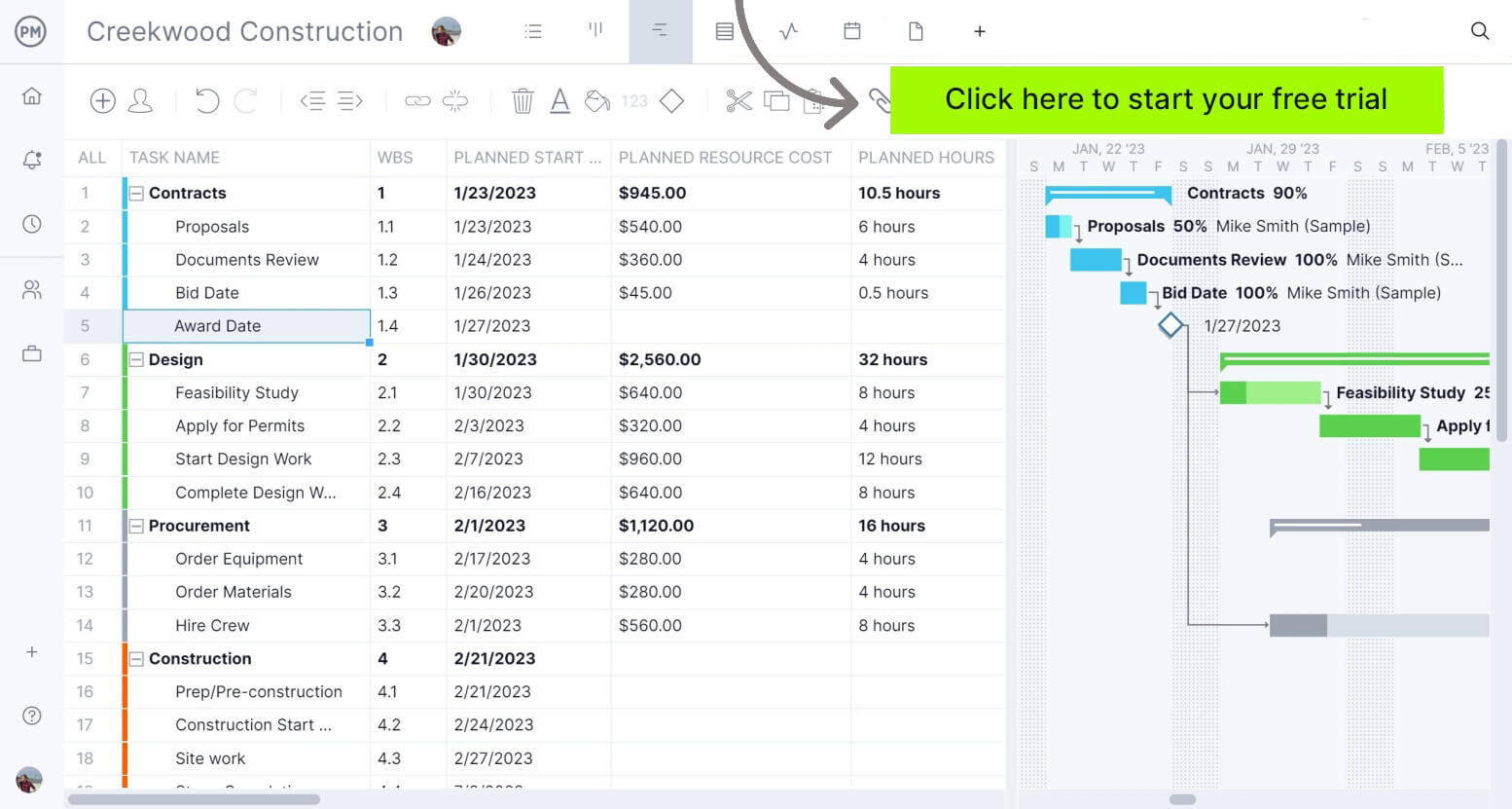
History of PRINCE2
Now that we have an idea of what PRINCE2 is, let’s take a quick look at its origins. First established in 1989 by the Central Computer and Telecommunications Agency (CCTA), the PRINCE2 method was originally based on PROMPT, another acronym that stands for Project Resource Organization Management Planning Technique, which was created in 1975 and used by the United Kingdom government for its information system projects. PRINCE2 was finally published as a project management methodology in 1996, and surprisingly, it is in the public domain.
Seven Principles of PRINCE2
Seven principles are the basis for PRINCE2 methodology. All must be followed for the project management methodology to be considered PRINCE2. These seven principles are a framework for a PRINCE2 mindset and they are as follows.
1. Continued Business Justification
The most important document in PRINCE2 is the business case, which is reviewed and revised throughout the life cycle of the project. This is done to make sure the project remains viable. If not, the project ends.
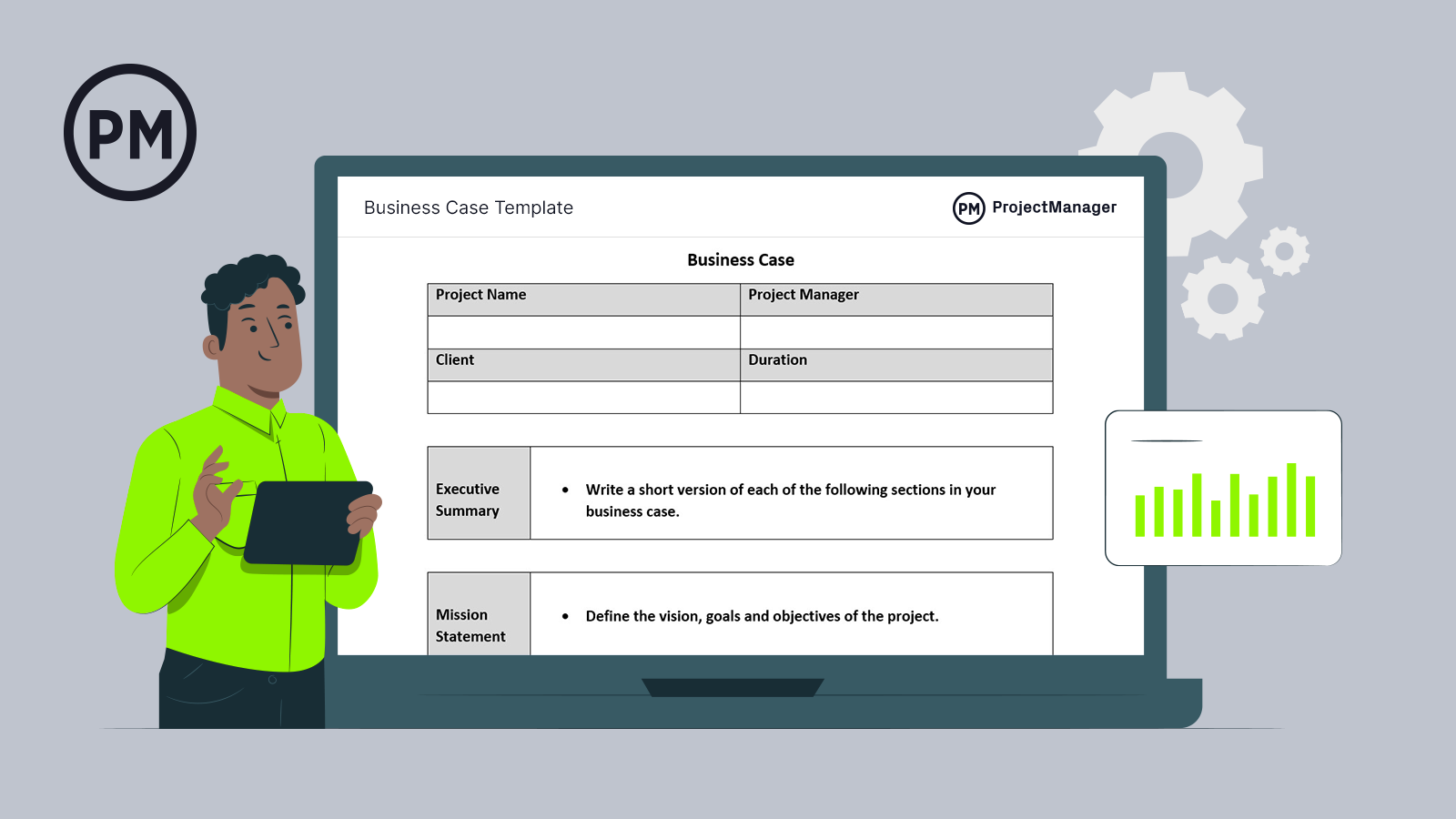
Get your free
Business Case Template
Use this free Business Case Template to manage your projects better.
Get the Template
2. Learn From Experience
There is a lesson log attached to every project that acts as a repository for lessons learned in previous projects to avoid repeating past mistakes. The lesson log is referred to throughout the project. You can get started with our free lessons learned template.

3. Roles and Responsibilities Are Defined
Project members can take on multiple roles or share a role. Four levels make up the structure of people in a project: corporate, project board, project manager and team.
4. Manage by Stages
PRINCE2 is planned and follows a stage-by-stage process. When transitioning between stages the business cast, risk and project plan are all updated.
5. Manage by Exception
There are what are called tolerances for each project objective. This creates limits and defines how authority is delegated. If the tolerance is exceeded the management team must decide if that tolerance is redefined.
6. Focus on Products
The quality requirements of deliverables are of paramount concern.
7. Tailor to Suit Project Environment
The size, complexity, importance, time, risk, etc., or the project environment, is used to tailor the project in the initiation phase and throughout each stage of the project.
Six Aspects of PRINCE2
The PRINCE2 methodology identifies six aspects or areas that need to be managed in every project. Project managers need to use KPIs to measure performance goals and project tolerances.
- Scope: What’s the work needed to complete the project? The details of the project scope should be explained in the project plan.
- Costs: How much does your project cost? The project costs are detailed in the project plan as well.
- Timescales: How long will it take to complete your project? Each project phase is explained in the project plan, as well as the project duration.
- Risk: What are your project risks? You’ll need a risk management approach to determine the mitigation strategies that will be used.
- Quality: What are the quality requirements of your clients or stakeholders? You’ll need to have quality control and assurance procedures in place to meet quality standards.
- Benefits: What are the expected benefits of your project? Every project needs a business case and a cost-benefit analysis to explain its purpose and financial or strategic benefits.
PRINCE2 Themes
PRINCE2 is a widely-used project management methodology that is structured around seven key themes. These themes provide guidance on the essential aspects of project management, ensuring that projects are well-planned, executed and controlled. Here’s a breakdown of each theme.
Business Case
The business case theme ensures that the project remains viable and worthwhile throughout its lifecycle. It establishes the justification for the project by outlining the benefits, costs, risks and investment required. This theme ensures that the project’s objectives align with the organization’s strategic goals. It is reviewed at key stages to confirm continued business justification, helping stakeholders make informed decisions on whether to proceed, adjust or terminate the project.
Organization
This theme defines the project’s structure and roles, ensuring that responsibilities and accountabilities are clearly assigned. It identifies the project’s stakeholders and establishes a project management team with defined roles, including the project board, project manager, and team managers. By setting up a clear organizational hierarchy and communication channels, this theme ensures effective decision making and stakeholder engagement throughout the project.
Quality
The quality theme focuses on ensuring that the project’s deliverables meet the required standards and satisfy stakeholder expectations. It involves defining quality criteria, quality control measures and quality assurance procedures. This theme emphasizes continuous review and verification of deliverables to maintain consistency and compliance with the agreed-upon standards. It helps prevent costly rework and enhances customer satisfaction by delivering high-quality products.
Plans
Plans are crucial for defining how objectives will be achieved, specifying the products to be delivered, timelines, costs and resources required. The plans theme guides the development of project, stage and team plans, making sure there is alignment with the project’s objectives. It also supports effective monitoring and control by providing a baseline against which progress and performance are measured. This theme promotes detailed planning to minimize risks and maximize resource efficiency.
Risk
The risk theme involves identifying, assessing and managing potential threats and opportunities that could impact the project’s success. It ensures proactive risk management by establishing procedures for risk identification, evaluation, response planning and monitoring. By systematically addressing uncertainties, this theme minimizes the impact of threats and maximizes opportunities, supporting informed decision-making and project resilience.
Change
The change theme manages any alterations to the project’s baseline, such as changes to scope, requirements, or deliverables. It establishes a formal process for recording, assessing, and approving change requests. This theme helps maintain control over changes, ensuring they are evaluated for their impact on cost, time, quality and risk before implementation. It safeguards the project’s objectives and prevents scope creep.
Progress
Progress monitoring is essential to make sure the project stays on track and meets its objectives. The progress theme provides a framework for tracking and controlling project performance against the plan. It involves setting performance baselines, reviewing progress at predefined intervals and reporting status to stakeholders. This theme supports proactive decision making by highlighting deviations from the plan, enabling timely corrective actions to keep the project on course.
PRINCE2 Roles & Responsibilities
To create a controlled project environment, roles and responsibilities are clearly defined in the PRINCE2 project management methodology. Here are the main roles that make up a PRINCE2 project management team.
Project Manager
The project manager is the one who is responsible for managing the project planning, execution, controlling and closure phases.
Project Manager Key Responsibilities
- Assemble a project team and monitor its performance
- Create a project plan that includes a schedule and budget
- Communicate with the project board and customers
Executive
The executive is the ultimate decision maker and is accountable for the project’s success.
Executive Key Responsiblities
- Ensure that the project remains aligned with business goals and provides value for money.
- Balances the needs of the user and supplier, maintaining overall business justification.
- Approve funding, authorize key decisions and provide strategic direction, ensuring the project stays on track to deliver expected benefits.
Senior User
The senior user represents those who will use the project deliverables.
Senior User Key Responsiblities
- Makes sure that the requirements are accurately defined and that the project’s outcomes meet user expectations.
- Provide user feedback, specify user needs and assess the deliverables’ suitability for purpose.
- Ensure the final product delivers the anticipated benefits and contributes to achieving business objectives.
Senior Supplier
The senior supplier represents those responsible for delivering the project’s products.
Senior Supplier Key Responsiblities
- Ensure that the solution is technically feasible and that quality standards are maintained.
- Manage supplier resources, provide technical guidance and ensure deliverables are produced on time and within budget.
- Focus on ensuring the integrity, functionality and performance of the project’s products.
Project Assurance
Project assurance roles provide independent oversight to ensure the project remains viable, meets quality standards, and aligns with business goals.
Project Assurance Key Responsibilities
- Report directly to the project board and monitor business, user and supplier interests.
- Review project deliverables, verify compliance with standards and ensure risks and issues are managed effectively.
- Maintain objectivity and safeguarding stakeholder interests.
Project Support
Project support provides administrative assistance to the project manager and team members.
Project Support Key Responsibilities
- Maintaining project documentation, tracking progress, managing communication and assisting with risk and issue logging.
- Support configuration management and that project management tools are used effectively.
- Helps to smooth project operations by organizing resources and maintaining records.
Team Manager
Depending on the size of your project, you might need a team manager to closely supervise team members and report to the project manager.
Team Manager Key Responsibilites
- Organize and manage team tasks to ensure they align with the project’s plan, objectives and quality standards.
- Track the team’s progress, identify issues or risks and provide regular updates to the project manager.
- Oversee the creation of products or deliverables, ensuring they meet the required quality criteria and are delivered on time.
Customer
There’s also a customer, user or supplier involved in the project. This is the person or organization that is paying for the project and will be impacted somehow by its outcome.
Customer Key Responsibilities
- Understand important project management documents such as a project plan, project brief, risk register or business case
- Provide enough funds to cover the project’s resource requirements
- Ensure that the project’s scope, objectives and desired outcomes are clearly communicated and understood by the project team.
Project Board
Finally, there’s a project board, which is made up of the customer and business executives, such as a person who represents the user side and another representing the suppliers or specialists involved in the project.
Project Board Key Responsibilities
- The project board members are in charge of the high-level decision-making process.
- Communicate with the project manager regularly and approve or reject his initiatives.
- Keep the project aligned with the organization’s strategic objectives and delivers expected business benefits.
Seven PRINCE2 Processes
The PRINCE2 project management methodology uses seven processes to manage projects. As PRINCE2 is a controlled environment method, the role of the project manager, project board and customer are defined so everyone’s on the same page.
1. Starting Up a Project (SU)
This is where it’s determined whether the project is viable. To do so, a project brief, business case and a detailed stage plan must be created.
You should also create a project initiation document (PID), another important PRINCE2 document that summarizes the key aspects of your project. Also, it’s important to do due diligence before the project is executed to save time and money once the project has started.
2. Initiating a Project (IP)
During this process, you’ll need to define the project aspects that we mentioned above; scope, costs, timescales, risk, quality and benefits. A project initiation document template can help.
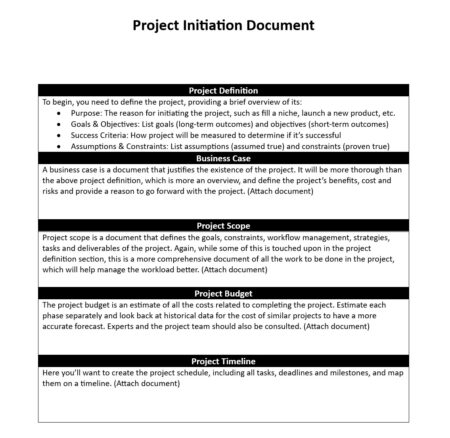
3. Directing a Project (DP)
This process is to help the project board be accountable to the project through their decision-making. They have the authority to initiate the project, deliver its product and close the project. They also offer direction and control during the project. Additionally, they work with corporate entities or program management and review post-project benefits.
Activities related to this process include authorizing the initiation, the project itself and the stages of the project. Another direction is offered as needed until project closure is authorized.
4. Controlling a Stage (CS)
This is where the project manager assigns tasks, monitors that work deals with whatever issues arise and reports on its progress to the project board.
Activities in this process include authorizing a work package with the team, reviewing its status and progress, and checking on its quality when complete. One must also review and compare progress to the project plan, capture any issues and risks and act to resolve them.
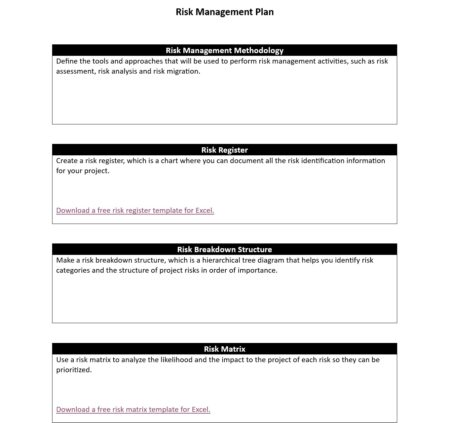
5. Managing Product Delivery (MP)
This process manages the delivery of the project product, controlling the work between the project manager and the team.
Activities associated with this process include accepting the work package, executing the work package and delivering the work package to make sure it’s complete.
6. Managing a Stage Boundary (SB)
There are two parts to this process: firstly, the project manager provides the project board with an overview of performance, updates the project plan and business case, and creates a plan for the next stage. Secondly, the information provided by the project manager will help the project board review the current stage, approve the next and review the updated plan.
Activities include planning the next stage and reporting on the stage end.
7. Closing a Project (CP)
This process is about making sure the project achieves its goals and objectives by the deadline. Sometimes project managers prepare the planned closure and the premature closure, but that’s not required.
Mandatory activities include handing over the product, evaluating the project and recommending its closure to the project board to officially close it out.
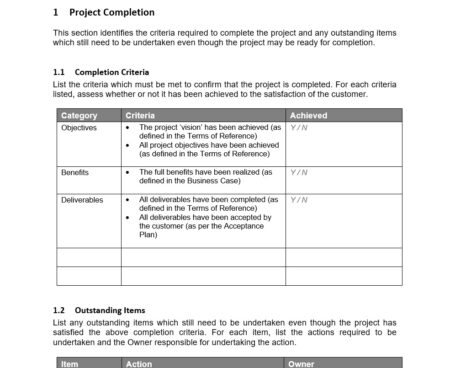
PRINCE2 Management Products
PRINCE2 management products are documents created and maintained throughout the project lifecycle to support planning, control and communication. They help make sure that projects are well-organized, transparent and aligned with business objectives. These products are grouped into three categories: baseline management products, records and reports.
PRINCE2 Baseline Management Products
Baseline management products are established at the beginning of a project or stage and serve as a reference point for tracking progress and managing change. They define the scope, quality, cost and timeline, providing a benchmark against which project performance is measured.
- Business Case: The business case justifies the project’s existence by detailing the benefits, costs and risks. It ensures that the project remains aligned with strategic goals and provides value for money throughout its lifecycle.
- Project Brief: The project brief outlines the project’s purpose, objectives, scope and constraints. It provides an overview of the project and helps stakeholders understand the project’s goals and strategic alignment before detailed planning begins.
- Project Initiation Document (PID): The PID is the foundation of the project, detailing the project’s scope, objectives, governance structure, quality requirements, risks and controls. It serves as the main reference for project execution and decision-making.
- Benefits Review Plan: This document specifies how and when the project’s benefits will be measured and reviewed after completion. It ensures that the project’s outcomes deliver the anticipated value and supports long-term strategic objectives.
PRINCE2 Records
Records are dynamic documents that capture ongoing project information, helping project managers track events, issues and risks. They provide a historical account of the project, supporting decision making and lessons learned.
- Risk Register: The risk register documents potential threats and opportunities that could impact the project. It records risk assessments, mitigation strategies, and the status of each risk, enabling proactive risk management.
- Issue Register: This register tracks issues that arise during the project, such as changes, concerns or conflicts. It records the description, impact, decision and status of each issue to ensure proper resolution.
- Quality Register: The quality register tracks quality checks and reviews conducted throughout the project. It documents the planned and actual results, to make sure that deliverables meet predefined quality standards.
- Lessons Log: The lessons log captures experiences, successes and challenges encountered during the project. It helps the team learn from past activities and supports continuous improvement in future projects.
- Daily Log: The daily log is an informal diary maintained by the project manager to record day-to-day events, observations and decisions. It captures details that may not be included in formal reports but are relevant to project management.
PRINCE2 Reports
Reports provide regular updates to stakeholders, delivering transparent communication and informed decision making. They summarize project performance, progress and issues, supporting governance and control.
- Highlight Report: The highlight report provides the project board with regular updates on project status, progress, risks and issues. It highlights key achievements, upcoming activities and any exceptions or concerns.
- Checkpoint Report: This report is used by team managers to update the project manager on team-level progress and performance. It tracks the status of assigned tasks and identifies any challenges or risks.
- End Stage Report: The end stage report is prepared at the end of each project stage, summarizing the stage’s achievements, performance against the plan and lessons learned. It helps the project board decide on proceeding to the next stage.
- End Project Report: The end project report provides a comprehensive summary of the project, including performance against the baseline, achieved benefits and lessons learned. It evaluates the project’s success and informs future initiatives.
PRINCE2 Certification
PRINCE2 has a course of study that leads to a certification in the methodology. The course requires the user to take the training with an accredited training organization and then pass an exam. It can be done in person or online.
There are four levels of certification in the PRINCE2 project management methodology:
- PRINCE2 2017 Foundation
- PRINCE2 2017 Practitioner
- PRINCE2 Agile Foundation
- PRINCE2 Agile Practitioner
Prices for the certification course and exam range from $550 to around $1,000 USD, depending on which level and certified training organization you choose.
PRINCE2 vs. PMP
There are as many project management certification programs and it can be difficult to decide which ones you need as a professional project manager. Without a doubt, one of the most popular project management certifications it’s the project management professional (PMP) title awarded by the project management institute (PMI).
So which project management certification it’s best for you? Basically, these certifications differ in that they offer two different project management frameworks. PMP requires proficiency in the PMBOK Guide to Project Management Book of Knowledge, published by the Project Management Institute (PMI), while PRINCE2 requires knowledge of all the principles, aspects and processes.
Therefore, research both project management methodologies and see which is the best fit for you. Some industries prefer one framework over the other. PRINCE2 is more used in the United Kingdom, Europe and Australia, while PMP is used more in the United States, Canada and the Middle East.
How ProjectManager Helps Implement the PRINCE2 Methodology
PRINCE2 is a project management methodology to manage projects and bring them in on time, within budget and with a quality deliverable. Whether you use PRINCE2 or a more agile framework to run your project, the goals are the same. It doesn’t matter how you do it, using ProjectManager helps you do it better.
Real-Time Updates for Better Tracking
Our project management software is cloud-based, which means that when statuses are updated that information is instantly reflected across the project management tool. Project managers can make data-driven decisions. There is a high-level view on the dashboard for tracking progress and reporting features to drill down into the data for a more granular look.

Multiple Project Views
What if your team isn’t working in PRINCE2? Our software acts like a bridge linking traditional project management methodologies to more agile frameworks. For example, our kanban board view visualizes workflow and allows teams to build backlogs and manage sprints, even as project managers control the overall project by using PRINCE2.

Control your project no matter how you manage it. ProjectManager has the flexibility to work with PRINCE2 or any method you prefer to run your project.
Related PRINCE2 Content
- 8 Free PRINCE2 Templates for Excel and Word
- Project Board in PRINCE2: Key Roles and Responsibilities
- PRINCE2 vs. PMP: Which Certification Is Right for You?
- How to Create a Project Brief: Template & Example Included
- Project Brief Template
- How to Create a Project Initiation Document (Template Included)
- Project Initiation Document Template
Whether you use PRINCE2 or another methodology to manage your project, you’ll need tools to control the work through all of its stages. ProjectManager is online project management software that works with multiple project management methodologies. From its real-time dashboard to online Gantt charts, you hold the reins. See how it can help you by taking this free 30-day trial today!

